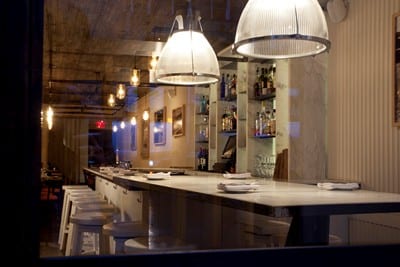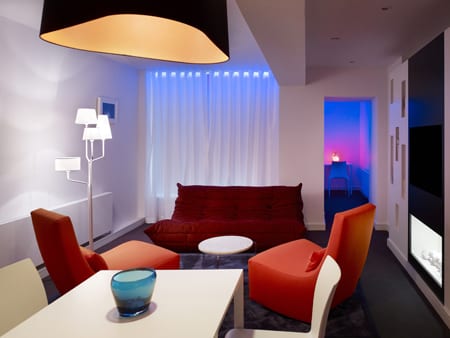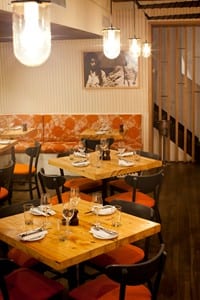 When James Mallios approached the owners of Persephone in Manhattan with a plan to re-envision the conservative, high-end Greek restaurant into a lively Mediterranean hotspot, “they were skeptical at first,” Mallios admits. After working for the restaurant for a year, he convinced the owners to hire an old college friend, Caleb Mulvena of Mapos, a firm fast becoming known for their sustainable design. “We wanted to hit that sweet spot… a vibe that’s refined but a little rough around the edges,” says Mulvena of their vision for the restaurant, who collaborated on the project with Maneli Wilson Interiors and the Katonah Building Corporation.
When James Mallios approached the owners of Persephone in Manhattan with a plan to re-envision the conservative, high-end Greek restaurant into a lively Mediterranean hotspot, “they were skeptical at first,” Mallios admits. After working for the restaurant for a year, he convinced the owners to hire an old college friend, Caleb Mulvena of Mapos, a firm fast becoming known for their sustainable design. “We wanted to hit that sweet spot… a vibe that’s refined but a little rough around the edges,” says Mulvena of their vision for the restaurant, who collaborated on the project with Maneli Wilson Interiors and the Katonah Building Corporation.
Enter Amali, a 2,000-square-foot farm-to-table restaurant where stylish sustainability is paramount. The farm-to-table concept came naturally, as Mulvena says there is “an innate sustainability to the Mediterranean diet.” Existing chairs and banquettes were reupholstered and painted, and even the challenges of repurposing became opportunities. “If you start peeling away the walls, you’re bound to find something,” Mulvena says, noting the old pine ceiling beams that were reused for tabletops, and the existing brick wall. “The accidental things are what I like the most,” Mallios admits.
To differentiate the various spaces in the restaurant, they mirrored the traditional Mediterranean home, with an entrance garden, a main area that was “relatively quiet, not ostentatious,” and a courtyard area, represented by the intimate, interior skylight room that boasts shutters on all four walls concealing adjustable LED lighting.
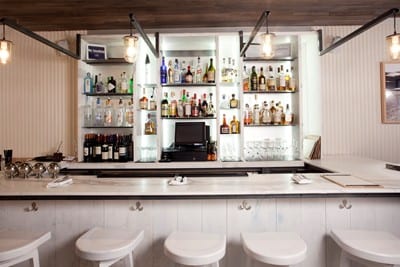
As a complement to the tile flooring and metal fixtures throughout, the designers created a custom steel and marble communal table in the front to encourage an informal bar experience. Most of the lighting is low-energy LED, while the feature incandescent lighting is all custom made and hung low for a flattering, soft effect.
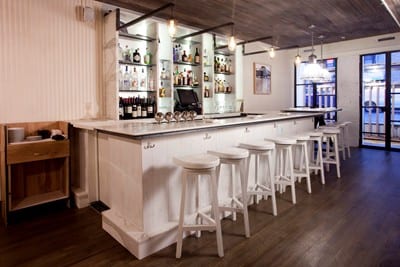
For the color scheme, Mulvena again took inspiration from the Mediterranean where “materials are allowed to age naturally in the sun,” reflected in the custom plaster wall finishing and white oak used throughout. “There is more of an appreciation for that vibrant pop of color when it’s against a clean, simple backdrop,” Mulvena says.
